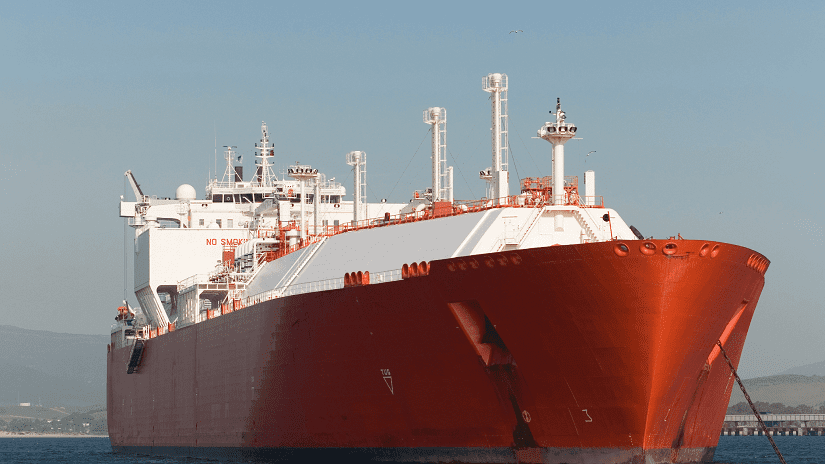Will Collaborative Robots be the Future of Ship Hull Maintenance?

The maintenance of ocean-going vessels is of prime importance. Cleaning a ship’s hull represents both a logistical challenge and high monetary cost, yet a failure to carry this out has consequences on the smooth passage of the ship as well as the risk of overlooking maintenance issues.
The average cost of cleaning a ship’s hull is between 150,000 to 300,000 Australian dollars. It takes around 8 days to complete and means the vessel is out of service during that time. The current method of cleaning and inspection involves a human workforce.
Hull Cleaning & Inspection: The challenge
With an estimated 56,000 ships navigating the oceans, a way to automate this laborious task would be revolutionary for the industry. As a ship sails, it’s exposed to considerable levels of contamination. Algae forms upon the hull, making the perfect fertile landscape for barnacles. As these grow, so does water resistance. To counteract this, more fuel is necessary to power the ship forward, so increasing the amount used and expelling additional pollution into the environment.
If it was possible to increase regularity inspections and cleaning, as well as reducing the time it takes to carry out the tasks, the benefits wouldn’t only be monetary, but environmentally sound as well.
Enter the Robot…
While robots are already carrying out many maintenance and cleaning tasks in various industries, true autonomy is still in the experimental phase. However, as technology advances, the reality inches ever closer. If we add in the ability of different robots to communicate with each other, a world of advanced cleaning and inspection methods becomes not just hypothetical, but possible.
This is the aim of a team of researchers working on a project entitled, “BugWright2 Autonomous Robotic Inspection and Maintenance on Ship Hulls and Storage Tanks”, led by Cédric Pradalier of the French Centre National de la Recherche Scientifique. 21 international partners are included in the project, including the University of Klagenfurt. The latter is headed by Stephan Weiss and Jan Steinbrener, who’re working on a program entitled, The Control of Networked Systems (CNS) Group.
Of the task in hand, Weiss says, “One of the big challenges we face is the shallow texture depth and smooth surface of the hull, both of which impede precise navigation.”
Overcoming this will involve the use of a variety of automatons. Both drones and magnetic crawlers will be needed to gather information, communicate with each other and perform cleaning tasks.
- Drones will fly around the entire vessel to survey the hull in its entirety. Several will be needed, as current technology means flight time is still limited to less than 30 minutes. Images will be taken, the data interpreted and then transmitted to the ‘worker’ robots – those that will carry out the cleaning tasks.
- Magnetic crawlers will then be deployed, according to the information gathered, to carry out necessary cleaning work. Different types will be needed, as some will work above the water line, others below.
But the complications don’t end there. Ships are typically comprised of multiple surface materials, each requiring different treatments. To adequately carry out the necessary cleaning, all these robots will need to communicate with each other and work in cooperation. This is vital as the crawlers, due to the environment in which they’ll be working, won’t be able to be fitted with GPS.
Overcoming this will involve a variety of sensors and the ability to localise different robots according to needs. In addition, the expert who’ll oversee the task will perform the necessary locations from a remote location.
While this might sound the stuff of science fiction, the project is well under way on a virtual plane. The next step is to transition this into a real-world scenario, using dedicated research vessels in various ports around the world.
Implications and Advantages
Such a technological breakthrough will have several advantages:
- Cleaner ships consume less fuel: While this is typically between 5-10%, in extreme cases it can be up to 30%. With the exponential rise in global fuel prices, this represents a considerable amount of money.
- Cleaner ships emit less harmful toxic gases: Beneficial to the planet and will go a long way to helping shipping companies meet their environmental responsibilities.
- Removing human error: When a human inspector views potential damage – let’s say a crack – in a ship’s hull, he or she must determine from a purely visual point of view whether it requires further intervention. An autonomous robot will make an objective decision solely from the data received.
- Can be performed from anywhere: With remote operation possible, the task can be performed from any chosen location – a central hub anywhere in the world.
The implications of such advances are obvious. While complete robotic collaboration and autonomy is still some years away, the building blocks are already in place. It’s not a case of if such advances come to pass, it’s just a case of when.
The race to bring it to reality is on – it’s just a question of who gets there first.
If you find this post useful then check out “How Robots Are Powering UT Measurements in Hard to Reach Places” and “Robotic Tech & UT Testing for Accuracy and Reduced Risk“
Contact us to find out more about our range of robots or any of our other inspection products, or request a quote online.
